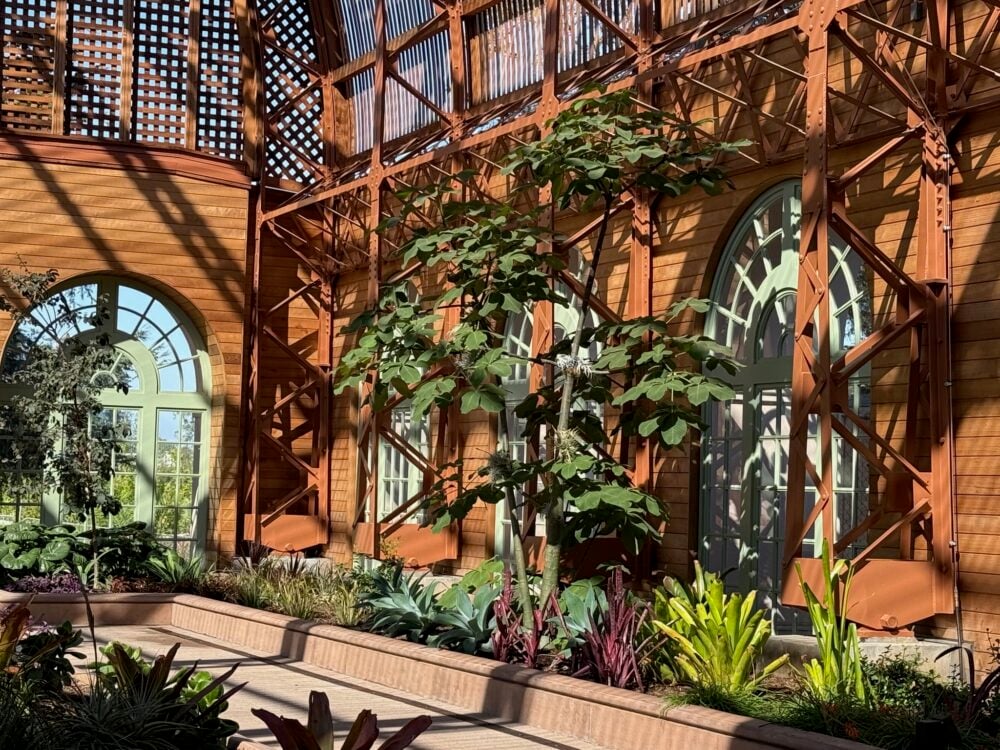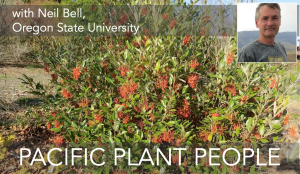

Contributor
- Topics: Archive, Inspired Gardens and Design
Six gardens in the south Puget Sound/Seattle area found a creative solution by joining together to market and support each other. South Sound Gardens, a group of geographically related gardens, formed in 2014 to collectively promote gardens that give visitors a variety of garden experiences and unique plant collections.
Plan a Pacific Northwest gardening day trip and visit all six, or enjoy a relaxing afternoon in any one of these beautiful gardens. A relaxing stroll through any of these delightful gardens will soothe your senses and delight your eyes.

Chase Garden
Located well off the beaten path, the Chase Garden sits on a bluff overlooking the Puyallup River Valley near the town of Graham, Washington, with spectacular views of Mount Rainier in the distance.
The 4.5-acre garden has a distinct Japanese influence. Trails wander through wooded areas, along water features, and include several benches to sit and reflect on the peacefulness of the area. Native shrubs, trillium, fawn lilies, and vanilla leaf mingle with Douglas fir trees, Japanese maples, rhododendrons, and conifers. As the seasons change, so do the colors and fragrances in the gardens.
The garden sold in March 2018, and the new owners are passionate about the area and the vision of Ione and Emmott Chase, the garden’s creators. The Garden Conservancy, stewards of the property since 1995, continues to hold a conservation easement in perpetuity, protecting and preserving the original vision of the Chases.
Public visiting hours vary, so check the Chase Garden website or Facebook page before making the drive. www.chasegarden.org

Soos Creek Botanical Garden
One of my personal favorites, the Soos Creek Botanical Gardens blends plant conservation with local history. Located near Auburn, Washington, the garden was originally farmland.
After traveling to England and Japan in the mid 1980s, the owners were inspired to create strolling gardens similar to what they found abroad. In addition to plants purchased during the trip, the garden contains many plants acquired from specialty nurseries across the Pacific Northwest.
The Louie Christensen Aviary is filled with the sounds of doves softly cooing, parakeets chattering, and cockatiel squawks and whistles. In early summer the Ole and Sarah Skagen Cedar Grove is filled with the fragrance of cedar and splashes of color from blooming kalmia, magnolia, and camellias.
Next to the garden area, the Soos Creek Heritage Center details the history of early settlers to the Soos Creek Plateau. A treasure trove of information for local history buffs, the exhibits include early photos and artifacts of the settlers as well as historical maps of the area.
A large demonstration vegetable garden includes raised garden beds and wide paths. Fig, apple, and plum trees and blueberries, raspberries, and aronia berries line the perimeter of the demonstration garden. The garden produces rhubarb, corn, beans, squash, carrots, peppers, and more every year, which is donated to local food banks.
Open mid-April through mid-November, Wednesday through Saturday, 10:00am to 3:00pm. www.sooscreekbotanicalgarden.org

PowellsWood
Hidden in a Federal Way neighborhood, PowellsWood is one of the smaller gardens. While the garden itself is only about 3 acres, it contains more than 1000 varieties of trees, shrubs, and perennials, and adjoins 35 acres of native forestland.
PowellsWood is a dynamic demonstration of partitioning of the landscape into featured gardens. The Entry Garden features windmill palms and stone birdbaths surrounded by Portuguese laurels and Japanese maples. Shades of green welcome you into the Fern and Rhododendron Borders, which is splashed with color in the spring as the rhodies burst into bloom.
The Perennial Border is designed around a recirculating stream and pond. A small footbridge provides close-up views of the stream running through the garden while colorful plants provide inspiration for paintings by local artists. The Shade Garden combines coast redwoods, golden locusts, and orangebark stewartia; blooming clematis and climbing roses create a peaceful picnic area in the summer.
A wooden overlook provides a view of the ravine and wildlife below the garden and is a great place to reflect on the beauty of the area.
Open April through October, Tuesday through Saturday from 10:00am to 3:00pm. www.powellswood.org

The Rhododendron Species Botanical Garden
If you love rhodies, this is the garden for you. The Rhododendron Species Botanical Garden is dedicated to the conservation, public display, and distribution of Rhododendron species. It is home to more than 700 species of rhododendrons, the largest collection in the world, displayed over 22 acres. For reference, there are approximately 1,000 recognized species in North America, Europe, Southeast Asia, and northern Australia.
The garden is open year-round, except major holidays, so the ambiance changes with the seasons. If you are looking for color and scents, late spring through early summer is the best time to visit. However, rhodies are evergreens, so any season is a great time to relax at the garden.
Open year-round, Tuesday through Sunday from 10:00am to 4:00pm. www.rhodygarden.org

Lakewold Gardens
Take a step back in time by visiting Lakewold’s Georgian-style mansion, a Washington State historical landmark, surrounded by 10 acres of landscape architecture by Thomas Church. Located in Lakewood, Washington, the gardens feature rare and native northwest plants, custom statuary, state champion trees, Japanese maples, and rhododendrons.
The land, bought by Emma Alexander in 1908 as a country retreat, became known as Lakewold, a Middle English term meaning “lake-woods.” Strolling the garden paths of Lakewold is reminiscent of classic European gardens.The best color and fragrance is found in the spring, March through May, although the garden is open year-round to the public.
Open April through September, Wednesday through Saturday, 10:00am to 4:00pm, Sunday, 10:00am to 6:00pm; October through March, Saturday and Sunday, 10:00am to 4:00pm. www.lakewoldgardens.org

Old Goat Farm
Christmas at the Old Goat Farm is especially popular. Gary decorates the Victorian farmhouse to the max—every room has a different theme and every room has a tree, including the bathrooms and hallways. There are another six to eight trees decorated outside the house as well. Special holiday teas for this season sell out months in advance.
The Victorian farmhouse dates back to the early 1900s. While the original farm had over 120 acres, it has been divided and sold many times over the years. The current owners, Greg Graves and Gary Waller, bought the house, old barn, and surrounding three acres in 2005. They have since renovated the gardens and pastures with a myriad of quality garden plants and farm animals. Several domestic birds and a couple of pygmy goats, Ozzie and Harriet, are popular attractions at the farm. Turkeys, peacocks, dogs, and cats join them. Greg and Gary also run a specialty nursery on the farm, featuring unique and quality garden plants that are showcased in the garden.
The farm is only open on set dates and for special events so check the website or call before visiting. www.oldgoatfarm.com
To visit one or all of the gardens, visit the South Sound Gardens website where you’ll find a detailed map and driving directions, holiday closures, and applicable entrance fees, if any. www.southsoundgardens.com








Responses